

4 Tools for a Flipped Classroom. Flipped classroom, flipped learning—you’ve probably heard these phrases in recent years, and you may be wondering how this strategy works. Flipped lessons replace teacher lectures with instructional material—often a video—that students watch and interact with at home. They apply what they learned in class the next day through a variety of activities or assignments that could once have been homework, with the teacher working as a coach or guide.
The benefits include allowing students to work at their own pace, to determine for themselves the material they need to review, and to apply concepts in different contexts in class to ensure that they thoroughly understand of the content. But this model can be unsuccessful if students don’t do the advance work—if they don’t have access to reliable internet outside of school, for example.
One solution is to keep the advance work in the classroom—students can reap the benefits of flipped instruction while doing everything in class. 8 Types Of Flipped Learning Classrooms And Tools To Build Them. Flipped learning is creating active learning environments wherever it is being implemented.
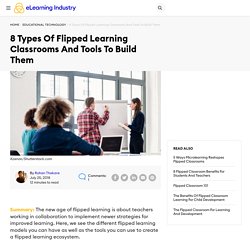
The new age of flipped learning is about teachers working in collaboration to learn newer strategies for improved learning. It’s also about viewing flipped learning from a broader perspective, to see how it is helping us create a true learning ecosystem. Which is why, in this article, we shall see the different flipped learning models you can implement as well as the tools you can use to create a flipped learning ecosystem. Autism Training Solutions: Chaining and Task Analysis. Best Apps and Websites for the Flipped Classroom. Can you solve the bridge riddle? - Alex Gendler. Brief Introduction to Discrete Trial Training Video. Comprehensible Input. Concept Attainment Model Vs Concept Development Model. Concept Formation.
Creativity Killer. Creative Problem Solving. Depth and Complexity Icons. Discrete Trial Instruction, ABA, Dr. Vincent Carbone. Forward & Backward Chaining Video. Integrated ELD in the ELA Classroom. Interaction. Introduction to Culturally Relevant Pedagogy. Lesson Delivery. Practice and Application. Review and Assessment. SDAIE Teaching strategy. Strategies. Task Analysis Video. How to Teach a Concept Attainment Lesson. Vincent Van Gogh Visits the Gallery - Doctor Who Series 5 - BBC. 2b Culturally Responsive Pedagogy.pdf. A Beginner's Guide to Flipped Classroom. The Flipped Classroom is a blended learning model in which traditional ideas about classroom activities and homework are reversed, or "flipped. " In this model, instructors have students interact with new material for homework first.
They then use class time to discuss the new information and put those ideas into practice. Adventures in the ATC: Search results for DTT. Communication deficits are one of the core symptoms of Autism Spectrum Disorders (ASD).
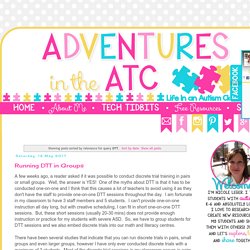
People with ASD can be slow to begin talking, or may not learn to talk at all; others may learn to produce words and sentences but have difficulty using them effectively to accomplish social interactive goals. Because communication is so important, everyone who works with the student has to know how to teach these skills. Applied Behavior Analysis (ABA) What is Applied Behavior Analysis?
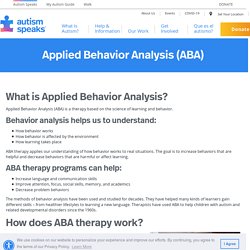
Applied Behavior Analysis (ABA) is a therapy based on the science of learning and behavior. Behavior analysis helps us to understand: Building Background. A Deeper Dive into the California English Language Development Standards. Where California Educators Collaborate Provided by: California Common Core State Standards: Professional Learning Modules Table of Contents.
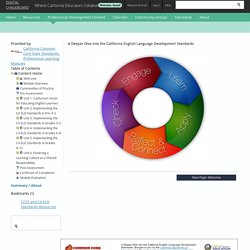
Flipping the Classroom. “Flipping the classroom” has become something of a buzzword in the last several years, driven in part by high profile publications in The New York Times (Fitzpatrick, 2012); The Chronicle of Higher Education (Berrett, 2012); and Science (Mazur, 2009); In essence, “flipping the classroom” means that students gain first exposure to new material outside of class, usually via reading or lecture videos, and then use class time to do the harder work of assimilating that knowledge, perhaps through problem-solving, discussion, or debates.

In terms of Bloom’s revised taxonomy (2001), this means that students are doing the lower levels of cognitive work (gaining knowledge and comprehension) outside of class, and focusing on the higher forms of cognitive work (application, analysis, synthesis, and/or evaluation) in class, where they have the support of their peers and instructor. What is it? | Does it work? How to Brainstorm in the Classroom. Brainstorming is an excellent teaching strategy to generate ideas on a given topic.
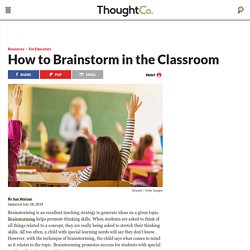
Brainstorming helps promote thinking skills. When students are asked to think of all things related to a concept, they are really being asked to stretch their thinking skills. All too often, a child with special learning needs will say they don't know. IDEAL Problem Solving (Links to an external site.) Indirect Instruction. Problem Solving Games. The SIOP Model - Writing Effective Content and Language Objectives. Thinking and mind tools: De Bono's 6 Hats. What are SDAIE Strategies? What are SDAIE Strategies? As classrooms become more culturally diverse, it is crucial for teachers to be familiar with strategies that can help students struggling with the English language (English Language Learners). Specially Designed Academic Instruction in English (SDAIE) is a teaching approach that uses various strategies to teach academic content to ELL students. SDAIE strategies focus on curriculum and teaching content to students, as compared to ESL curriculum, which focuses more on developing students’ English language skills.